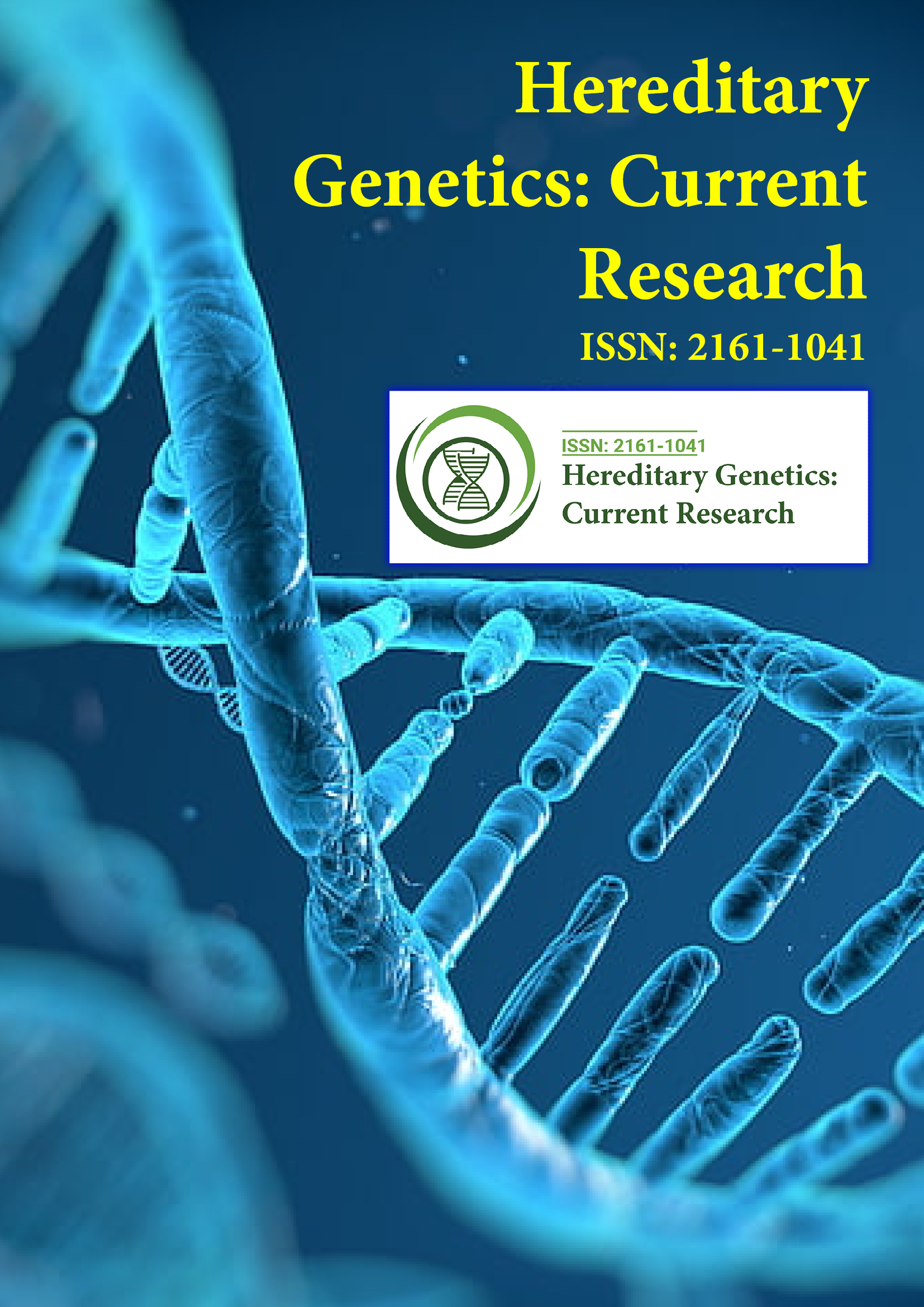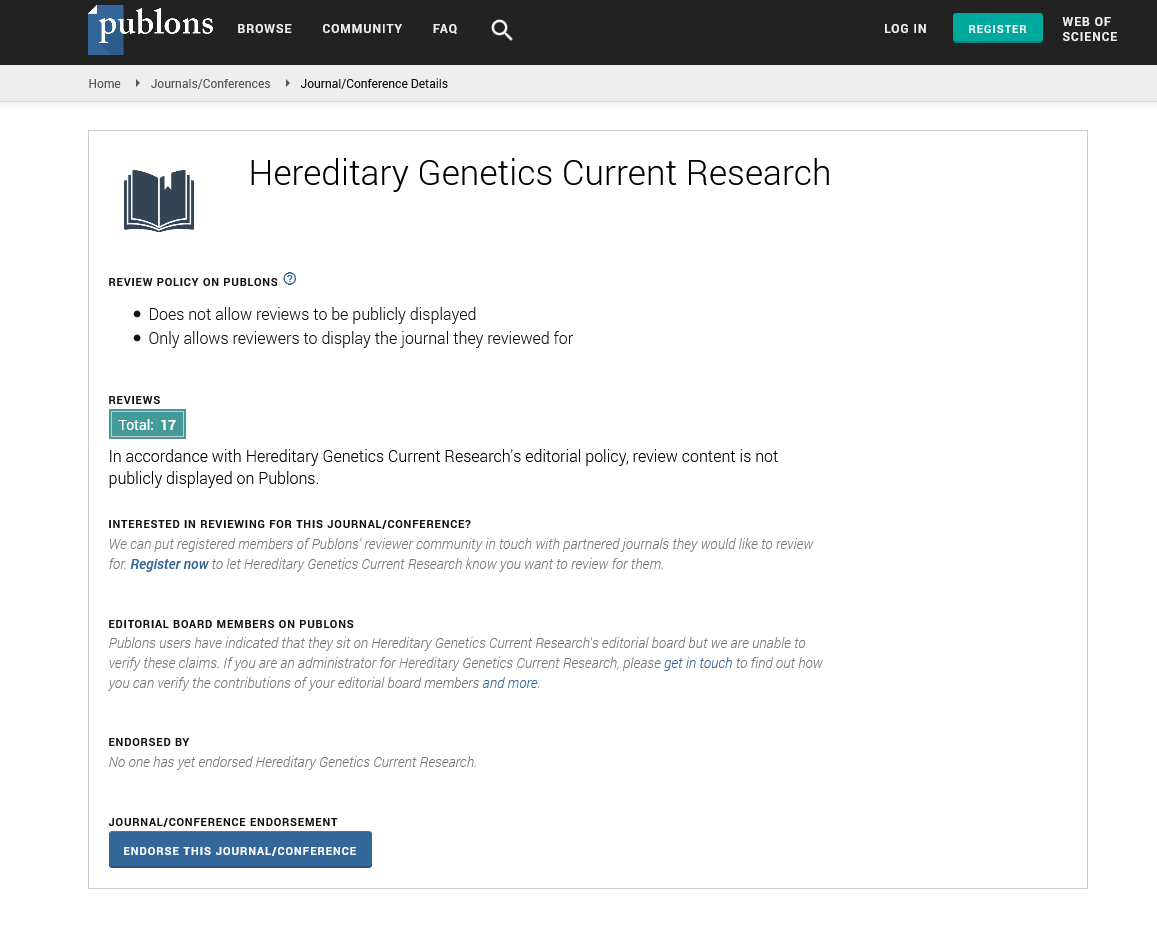Indexed In
- Open J Gate
- Genamics JournalSeek
- CiteFactor
- RefSeek
- Hamdard University
- EBSCO A-Z
- NSD - Norwegian Centre for Research Data
- OCLC- WorldCat
- Publons
- Geneva Foundation for Medical Education and Research
- Euro Pub
- Google Scholar
Useful Links
Share This Page
Journal Flyer

Open Access Journals
- Agri and Aquaculture
- Biochemistry
- Bioinformatics & Systems Biology
- Business & Management
- Chemistry
- Clinical Sciences
- Engineering
- Food & Nutrition
- General Science
- Genetics & Molecular Biology
- Immunology & Microbiology
- Medical Sciences
- Neuroscience & Psychology
- Nursing & Health Care
- Pharmaceutical Sciences
Opinion Article - (2024) Volume 13, Issue 2
Genetic Resilience in Urbanized Coral Reefs: Implications for Conservation and Sustainability
Jose Lopez*Received: 28-May-2024, Manuscript No. HGCR-24-28366; Editor assigned: 31-May-2024, Pre QC No. HGCR-24-28366 (PQ); Reviewed: 14-Jun-2024, QC No. HGCR-24-28366 QC ; Revised: 21-Jun-2024, Manuscript No. HGCR-24-28366 (R); Published: 28-Jun-2024, DOI: 10.35248/2167-7956.24.13.284
Description
Urbanization is a growing global phenomenon that exerts profound effects on coastal and marine ecosystems, particularly coral reefs. Coral reefs, known for their high biodiversity and ecological importance, face mounting pressure from both natural and anthropogenic disturbances. One of the most critical threats is urbanization, which often leads to habitat degradation, pollution and climate change. However, the resilience and sustainability of coral reef ecosystems are not solely determined by environmental factors but also by the genetic diversity of reef organisms. In recent years, population genetics has become a powerful tool to understand how urbanization influences the evolutionary potential and long-term viability of reef species. This article explains the implications of population genetics for urbanized reef sustainability, considering the challenges and opportunities for preserving these vital ecosystems.
Urbanization refers to the process of population shift from rural to urban areas, accompanied by an increase in built infrastructure, transportation and resource exploitation. For coral reefs, this means increased pollution (both land-and water based), changes in sedimentation patterns, overfishing and the alteration of natural water flow due to coastal development. These factors contribute to reef degradation, making coral reefs more susceptible to diseases, bleaching events and reduced reproductive success.
Studies on reef fish populations have shown that urbanized areas tend to have more genetically distinct populations due to the isolation caused by barriers such as docks, marinas and coastal development. As these populations become increasingly isolated, they may lose the genetic connections that allow them to share beneficial traits, such as disease resistance or heat tolerance. This lack of connectivity is particularly concerning for the long-term sustainability of urbanized reefs, as populations may become more vulnerable to localized extinction events.
For coral populations, genetic bottlenecks can be particularly detrimental because they reduce the number of available genetic variants, leaving the population less capable of adapting to environmental changes. Coral reefs subjected to high levels of urbanization may be more prone to these genetic bottlenecks, which can increase their vulnerability to climate change, disease and other stressors.
Valuable insights for conservation strategies. Population genetics can guide the development of Marine Protected Areas (MPAs), coral restoration efforts and strategies for enhancing reef connectivity.
MPAs are essential tools for preserving biodiversity and promoting the resilience of coral reefs. Population genetic studies can help identify areas of high genetic diversity and connectivity, guiding the establishment of MPAs in locations that maximize the genetic health of reef populations. By protecting areas that serve as genetic refugia, these conservation efforts can help mitigate the negative impacts of urbanization on reef populations.
The transplantation of healthy corals from unaffected areas to degraded reefs. Population genetics can inform these efforts by identifying the best source populations for restoration, ensuring that transplants maintain high genetic diversity. Additionally, assisted evolution techniques, such as selective breeding for heatresistant corals, may help increase the resilience of corals in urbanized environments. Population genetic tools can guide these interventions by identifying genetic markers linked to resilience traits, ensuring that restoration efforts are both effective and sustainable.
In urbanized reef systems, efforts to enhance connectivity between isolated populations can help promote gene flow and genetic diversity. This can be achieved through the restoration of habitats that facilitate larval dispersal, such as seagrass meadows and mangroves, or through the creation of artificial reefs that provide stepping stones for coral larvae. Population genetics can assess the effectiveness of these strategies by tracking changes in genetic diversity and gene flow before and after connectivityenhancing interventions.
Conclusion
The population genetics of coral reef species plays a critical role in determining the sustainability and resilience of urbanized reef ecosystems. Urbanization, with its associated impacts on habitat fragmentation, pollution and climate change, poses significant challenges to the genetic health of coral reefs. By reducing genetic diversity, impeding gene flow and increasing the risk of inbreeding, urbanization threatens the evolutionary potential of these ecosystems. However, population genetics provides powerful tools to assess and mitigate these impacts, offering pathways for effective conservation and management strategies. In a world increasingly dominated by urbanization, understanding and maintaining the genetic integrity of coral reef populations is essential for their long-term survival and the preservation of the vital services they provide.
Citation: Lopez J (2024). Genetic Resilience in Urbanized Coral Reefs: Implications for Conservation and Sustainability. Hereditary Genet. 13:284.
Copyright: © Lopez J. This is an open access article distributed under the terms of the Creative Commons Attribution License, which permits unrestricted use, distribution, and reproduction in any medium, provided the original author and source are credited

